There were almost daily sightings of white-fronted geese throughout February with the best counts being 31 on Huttoft Marsh on 1st, five on Huttoft Marsh with greylags for most the month and eight north on 9th. Continuing on the goose theme: two barnacle geese on Huttoft Marsh on 25th, an Egyptian goose flew south over Anderby Marsh on 25th and two tundra bean geese over Huttoft Pit on 27th. The Egyptian goose being only the second record in the last two years.
Lincolnshire Coastal Country Park - February 2021
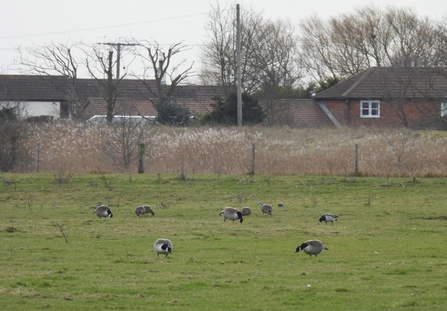
An excellent day on 25th February with seven species of goose noted. In the picture: Canada goose, white-fronted goose and barnacle goose ©Garry Wright
A great white egret was showing well on Huttoft Marsh on 18th and 25th.
A Slavonian grebe on the drain in the middle of Chapel St Leonards proved very popular showing down to five metres at times. Initially found by a local resident on 22nd February it continues to perform well.
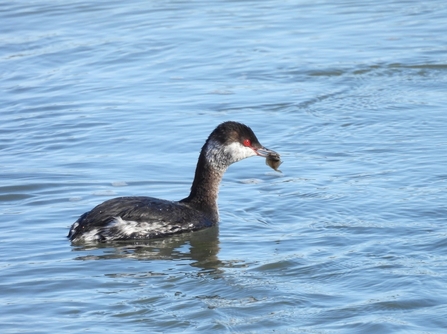
A very showy Slavonian grebe on the drain in Chapel St Leonards © Garry Wright
An unprecedented arrival of dunlin occurred during Storm Darcy, the birds were thought to be of the Scandinavian origin, due to their large bill (beak) size. Typically numbers this time of year would be in the low single figures rarely hitting double figures. The first record of the year was on the 5th which involved a single bird on Huttoft Marsh. Within a few days numbers swelled to an incredible 1,800 which included an impressive 1,100 birds on Anderby Marsh alone!
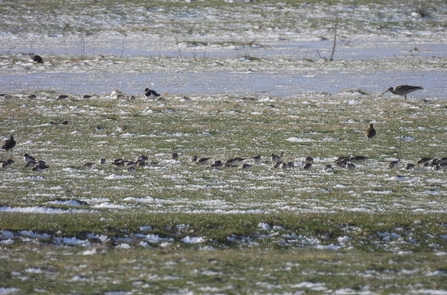
There was an unprecedented arrival of dunlin during Storm Darcy © Garry Wright
Storm Darcy also brought in a good arrival of woodcock with a peak count of 30. A large number of woodcock also succumbed on migration and as a result were found washed up on the tide line. A survey of the beach during the week revealed at least 25 washed up birds from Sutton-on-sea to Chapel North Sea Observatory. Little gulls also featured during the week of Storm Darcy which mostly included juvenile birds (peak count of 4) and one adult in breeding plumage was noted on farmland near Chapel Pit.
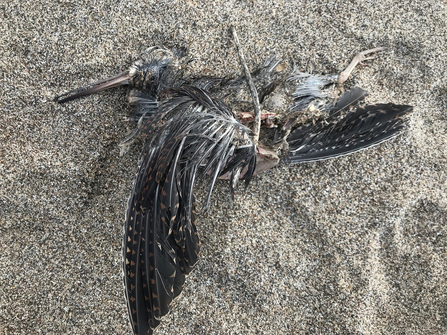
One of many woodcock succumbing on migration and washing ashore during Storm Darcy © Richard Doan
Skylarks now present and singing throughout the area with a peak count of 160 on 12th February.
Seawatching highlights included 19 kittiwake on 9th, a shag on 13th, velvet scoter on 19th and a great northern diver on 26th February. Red-throated diver numbers peaked at 419 on 25th.
Short-eared owls continue to show well on National Trust Sandilands (former golf course) with one to four birds present daily.
Two to three water pipit were present on Anderby Marsh most days in the later weeks of the month.
Winter wildfowl numbers started to decrease which is to be expected during February, however, peak counts of 62 teal on Anderby Marsh and 300 wigeon at Huttoft Pit were still noted. In addition to this pink-footed Geese were also noted to be flying back north (presumably to Iceland) with a count of 410 on 26th. Meanwhile whooper swans still remain in the area with numbers varying daily from 30-70 birds.
Spring migrants included a red kite over Huttoft Marsh on 25th, three white wagtail on Anderby Marsh on 28th Feb and a scattering of chiffchaffs.
Three harbour porpoise were seen on 26th heading north in flat calm conditions at 0845hrs.
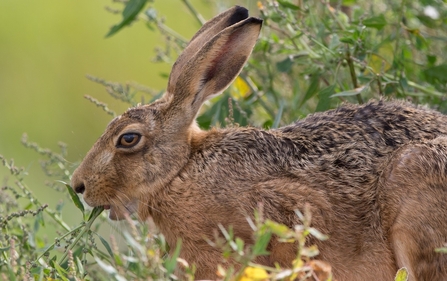
Brown hares are becoming more active with some boxing noted on fine days © Garry Wright
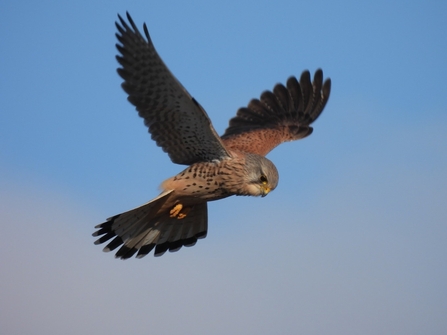
Kestrels have been showing very well lately on clear days with multiple sightings © Garry Wright

